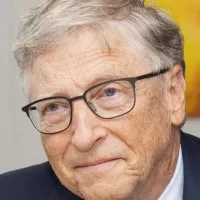Jordan, officially the Hashemite Kingdom of Jordan, is a country located in the Southern Levant region of West Asia. It shares borders with Syria, Iraq, Saudi Arabia, Israel, and Palestine. The Jordan River flows along its western border. Amman is the capital and largest city. Jordan also has a coastline on the Red Sea, near the Gulf of Aqaba.
1905: Shoubak Revolt
In 1905, Transjordan's tribes revolted during the Shoubak revolt, which was brutally suppressed.
1908: Young Turk Revolution
In 1908, the Young Turk Revolution in the Ottoman Empire led to policies of Turkification and centralisation.
1908: Construction of the Hejaz Railway
In 1908, the construction of the Hejaz Railway helped the population economically.
1910: Karak Revolts
In 1910, Transjordan's tribes revolted during the Karak revolts, which were brutally suppressed.
1915: Armenians Seek Refuge in Levant
Descendants of Armenians that sought refuge in the Levant during the 1915 Armenian genocide numbered approximately 5,000 persons, mainly residing in Amman.
1915: McMahon-Hussein Correspondence
In 1915, the McMahon-Hussein Correspondence outlined British willingness to recognise an independent Arab state.
June 1916: Start of the Arab Revolt
On 5 June 1916, the Arab Revolt started from Medina.
1916: Sykes-Picot Agreement
In 1916, the secret Sykes–Picot Agreement divided the region into French and British spheres of influence.
July 1917: Battle of Aqaba
On 6 July 1917, fighting in the Arab Revolt reached Transjordan in the Battle of Aqaba.
1917: Balfour Declaration
In 1917, the Balfour Declaration announced British support for a "national home" for Jews in Palestine.
October 1918: Faisal Enters Damascus
In October 1918, Faisal entered Damascus and established an Arab-led military administration.
July 1920: Battle of Maysalun
On 24 July 1920, the Hashemite Kingdom over the region of Syria was forced to surrender to French troops during the Battle of Maysalun.
August 1920: Herbert Samuel visits As-Salt
On 21 August 1920, British High Commissioner Herbert Samuel declared in As-Salt that Britain would aid local governments in Transjordan, separate from Palestine.
October 1920: Establishment of the Arab Legion
On 22 October 1920, the first organised army in Jordan was established, named the "Arab Legion".
November 1920: Abdullah Arrives in Ma'an
On 21 November 1920, Abdullah arrived in Ma'an to redeem the Greater Syrian Kingdom.
March 1921: Transjordan added to British Mandate
In March 1921, the British decided to add Transjordan to their Mandate for Palestine.
April 1921: Establishment of the Emirate of Transjordan
On 11 April 1921, the Emirate of Transjordan was established with Abdullah as emir.
April 1921: Organization of First Police Force
On 11 April 1921, the first police force was organised in Jordan after the fall of the Ottoman Empire.
1921: Kura Rebellion
In 1921, a small local rebellion occurred at Kura and was suppressed by Abdullah's forces.
1921: Establishment of the Emirate of Transjordan
In 1921, the Emirate of Transjordan was established as a British protectorate.
September 1922: League of Nations Recognizes Transjordan
In September 1922, the Council of the League of Nations recognised Transjordan as a state.
1923: Suppression of rebellions
In 1923, small local rebellions were suppressed by Abdullah's forces with the help of the British.
1924: Hashemite Custodianship over Holy Sites in Jerusalem
Since 1924, the ruling Hashemite dynasty has had custodianship over holy sites in Jerusalem, a position reinforced in the Israel–Jordan peace treaty.
1930: Christian Population in Jordan
In 1930, Christians made up about 20% of the population of Jordan.
March 1946: Treaty of London Signed
On 22 March 1946, the Treaty of London was signed, recognizing Transjordan's independence.
May 1946: Transjordan Becomes Kingdom
On 25 May 1946, Transjordan became the Hashemite Kingdom of Jordan with Abdullah as king.
1946: Jordan Gains Independence
In 1946, Jordan gained independence and became officially known as the Hashemite Kingdom of Jordan.
1946: Growth of the Arab Legion
In 1946, the Arab Legion grew to 8,000 men from 150 men in 1920.
1946: Population of Amman
The population of Amman was 65,754 in 1946.
1946: End of British Mandate
Transjordan remained a British mandate until 1946.
May 1948: Jordan Intervenes in Palestine War
On 15 May 1948, Jordan intervened in the 1948 Palestine war.
1948: Jordan Accepts Refugees
From as early as 1948, Jordan has accepted refugees from multiple neighbouring countries in conflict.
1948: Jordan Captures the West Bank
In 1948, during the Palestine war, Jordan captured and annexed the West Bank.
1948: Arrival of Palestinian Refugees
The first wave of Palestinian refugees arrived in Jordan during the 1948 Arab–Israeli War.
1949: Name officially changed to Hashemite Kingdom of Jordan
Until 1949 it continued to be referred to as the Hashemite Kingdom of Transjordan in English.
April 1950: Jordan Annexes West Bank
On 24 April 1950, Jordan formally annexed the West Bank territories after the Jericho Conference.
June 1950: Arab League Response to Annexation
On 12 June 1950, the Arab League declared Jordan's annexation of the West Bank a temporary measure.
1950: Water and Sanitation Availability
In 1950, water and sanitation was available to only 10% of the population in Jordan.
1951: Assassination of King Abdullah
In 1951, King Abdullah was assassinated at the Al-Aqsa Mosque.
1952: Adoption of the Constitution
In 1952, Jordan's constitution was adopted, establishing the legal framework that governs the monarch, government, legislature, and judiciary.
1952: Modern Constitution Established
In 1952, Talal established Jordan's modern constitution.
1953: Hussein Ascends to Throne
In 1953, Hussein ascended to the throne at age 17.
December 1955: Jordan Joins United Nations
On 14 December 1955, Jordan became a member of the United Nations.
March 1956: Arabisation of Army Command
On 1 March 1956, King Hussein Arabised the command of the Army.
1956: Establishment of the Public Safety Directorate
In 1956, the Public Safety Directorate was established in Jordan, taking over police duties from the Arab Legion and the Transjordan Frontier Force.
July 1958: Dissolution of Arab Federation
On 14 July 1958, the Arab Federation between Jordan and Iraq was dissolved after a coup in Iraq.
1966: Establishment of the Royal Society for the Conservation of Nature
In 1966, The Royal Society for the Conservation of Nature was set up to protect and manage Jordan's natural resources.
1967: Fighting Occurred along Jordan River
In 1967, fighting occurred along the 1967 Jordan River cease-fire line.
1967: Jordan Views Independent Palestinian State with 1967 borders
Jordan views an independent Palestinian state with the 1967 borders as part of the two-state solution and of supreme national interest.
1967: Peak of Palestinian Refugees and Revocation of Citizenship
The arrival of Palestinian refugees in Jordan peaked in the 1967 Six-Day War. Jordan revoked the citizenship of thousands of Palestinians.
1968: Battle of Karameh
In 1968, the Battle of Karameh saw Jordanian and PLO forces repelling an Israeli attack.
September 1970: Black September
In September 1970, the Jordanian army targeted the fedayeen, leading to the expulsion of Palestinian fighters in what became known as Black September.
1973: Yom Kippur War
In 1973, during the Yom Kippur War, Jordan sent a brigade to Syria to attack Israeli units.
1974: Rabat Summit Conference
At the Rabat summit conference in 1974, Jordan and the Arab League recognized the PLO as the legitimate representative of the Palestinian people.
1979: Census Statistics
The 1979 census shows that there were 6.7 persons per household in Jordan.
1987: Discovery of Natural Gas
Natural gas was discovered in Jordan in 1987, estimated at 230 billion cubic feet.
1988: Jordan Renounces Claim to West Bank
In 1988, Jordan renounced its claim to the West Bank in favor of the Palestinians.
1990: Influx of Palestinian Refugees
In 1990, Jordan saw an influx of Palestinian refugees during the Gulf War.
1991: Madrid Conference
In 1991, Jordan agreed to negotiate a peace treaty at the Madrid Conference.
October 1994: Israel-Jordan Peace Treaty
On 26 October 1994, the Israel–Jordan peace treaty was signed.
1997: Khaled Mashal Poisoning
In 1997, Israeli agents poisoned Khaled Mashal in Jordan, leading to international pressure on Israel to provide an antidote and release prisoners.
February 1999: Abdullah II Ascends to the Throne
In February 1999, Abdullah II ascended to the throne after the death of his father, King Hussein. Abdullah reaffirmed Jordan's commitment to the peace treaty with Israel and its relations with the United States.
1999: Improvement of Relations with Persian Gulf Countries
After King Hussein's death in 1999, relations between Jordan and the Persian Gulf countries greatly improved.
1999: Establishment of Jordan Design and Development Bureau
The Jordan Design and Development Bureau was established by King Abdullah II in 1999.
2000: Membership in the World Trade Organization and Free Trade Agreement with the United States
In 2000, Jordan joined the World Trade Organisation and signed the Jordan–United States Free Trade Agreement, thus becoming the first Arab country to establish a free trade agreement with the United States.
2002: Childhood Immunisation Rates
In 2002, childhood immunisation and vaccines reached more than 95% of children under five in Jordan.
2002: Labor Force Employed in Industry
In 2002, more than 21% of Jordan's labor force was employed in the industrial sector.
2003: Mandaeans Flee to Jordan
Following the 2003 invasion of Iraq, it is estimated that 1,400 Mandaeans fled to Amman, Jordan to escape persecution.
2004: GDP Growth
Between 2004 and 2008, Jordan's GDP grew at an average rate of 8% per annum.
2004: Industrial Sector Contribution to GDP
In 2004, the industrial sector accounted for approximately 26% of Jordan's GDP.
2004: Jordan Reaches AFC Asian Cup Quarter-Finals
The national football team reached the quarter-finals of the AFC Asian Cup in 2004.
November 2005: Al-Qaeda Hotel Bombings in Amman
In November 2005, Al-Qaeda, under Abu Musab al-Zarqawi, launched coordinated explosions in three hotel lobbies in Amman, resulting in 60 deaths and 115 injuries. These bombings, targeting civilians, caused widespread outrage among Jordanians and led to improved internal security in Jordan.
2005: Establishment of German Jordanian University
In 2005, the German Jordanian University was established, leading to an increased interest in the German language.
2006: Port of Aqaba Ranked Best Container Terminal
In 2006, the Port of Aqaba was ranked as being the "Best Container Terminal" in the Middle East by Lloyd's List.
2007: Medical Tourism Statistics
A study found that 190,000 patients received treatment in Jordan in 2007.
2007: Jordan Hospital Accreditation
In 2007, Jordan Hospital, the biggest private hospital, was the first general specialty hospital to gain the international accreditation JCAHO.
2007: Number of Assyrian Christians
In 2007, there were up to 150,000 Assyrian Christians in Jordan, many of whom were refugees from Iraq.
2008: GDP Growth
Between 2004 and 2008, Jordan's GDP grew at an average rate of 8% per annum.
2008: End of Economic Boom
The economic boom led by Abdullah II's reforms continued until 2008.
2009: Gender Equality in Education Ranking
In 2009, UNESCO ranked Jordan's educational system 18th out of 94 nations for providing gender equality in education.
2009: Net Official Development Assistance to Jordan
In 2009, net official development assistance to Jordan totalled US$761 million; approximately two-thirds of this was allocated as grants, of which half was direct budget support.
2010: Medical Tourism Statistics
A study found that 250,000 patients received treatment in Jordan in 2010, bringing over $1 billion in revenue.
2010: Infrastructure Ranking
According to the 2010 World Economic Forum's Index of Economic Competitiveness, Jordan was ranked as having the 35th best infrastructure in the world.
2010: GDP Growth
From 2010 onwards, Jordan's GDP grew at an average rate of around 2.6%.
2010: Jordan Qualifies for FIBA World Basketball Cup
Jordan qualified for the FIBA 2010 World Basketball Cup.
2010: Influx of Syrian Refugees
Since 2010, over 1.4 million Syrian refugees have fled to Jordan to escape the violence in Syria.
2011: Road Network Statistics
As of 2011, Jordan's road network consisted of 2,878 km of main roads, 2,592 km of rural roads, and 1,733 km of side roads.
2011: Renewable Energy Contribution
In 2011, 3% of Jordan's electricity was generated from renewable energy.
2011: Attempt to Join the Gulf Cooperation Council
In 2011, Jordan and Morocco tried to join the Gulf Cooperation Council, but the Gulf countries offered a five-year development aid program instead.
2011: Jordan's Foreign Debt
In 2011, Jordan's foreign debt was $19 billion, representing 60% of its GDP.
2011: Deposition of Ali Abdullah Saleh
In 2011, President Ali Abdullah Saleh was deposed in the uprising in Yemen.
2011: The Arab Spring Protests and Reforms
In 2011, large-scale Arab Spring protests erupted, demanding economic and political reforms. In response to domestic unrest, King Abdullah replaced his prime minister and introduced reforms including reforming the constitution and laws governing public freedoms and elections.
2011: Jordan Reaches AFC Asian Cup Quarter-Finals
The national football team reached the quarter-finals of the AFC Asian Cup in 2011.
2011: Impact of Arab Spring on Tourism
The turmoil caused by the Arab Spring depressed GDP growth in Jordan. The number of tourist arrivals dropped sharply after 2011.
2012: Establishment of the Constitutional Court
In 2012, the constitutional court was set up in Jordan to hear cases regarding the constitutionality of laws.
2012: Fuel Subsidy Cuts and Protests
In 2012, the government cut subsidies on fuel in Jordan, increasing its price. The decision, which was later revoked, caused large scale protests to break out across the country.
2012: Migrant Workers and Expatriates in Jordan
In 2012, there were around 1.2 million illegal and 500,000 legal migrant workers and expatriates in Jordan.
2012: Liquified Natural Gas Port Built
Jordan built a liquified natural gas port in Aqaba in 2012 to temporarily substitute supply and diversify its energy sources.
2012: Jordan Misses Olympic Qualification
Jordan came within a point of reaching the 2012 Olympics after losing the final of the 2010 Asian Cup to China, settling for silver instead.
2013: Queen Alia International Airport Expansion Completion
In 2013, the Queen Alia International Airport expansion was completed with new terminals costing $700 million.
2014: Christian Population Estimate
According to a 2014 estimate by the Orthodox Church, there were around 250,000 Christians in Jordan, all of whom are Arabic-speaking.
2014: Iraqi Christians Seek Refuge
Around 12,000 Iraqi Christians sought refuge in Jordan in 2014 after the Islamic State took the city of Mosul.
2014: Participation in Aerial Bombardment Campaign Against ISIS
In 2014, Jordan joined an aerial bombardment campaign by an international coalition led by the United States against the Islamic State as part of its intervention in the Syrian Civil War.
2014: 7Hills Skatepark Construction Complete
In 2014, NGO Make Life Skate Life completed construction of the 7Hills Skatepark, the first skatepark in the country located in Downtown Amman.
2014: Queen Alia International Airport Award
In 2014, Queen Alia International Airport was awarded 'the best airport by region: Middle East' by Airport Service Quality survey.
2014: Industry accounted for 6% of the GDP
In 2014, industry accounted for 6% of Jordan's GDP.
2014: ICT Sector Contribution
In 2014, the ICT sector in Jordan accounted for more than 84,000 jobs and contributed to 12% of the GDP.
2015: Literacy Rate in Jordan
According to UNESCO, the literacy rate in Jordan in 2015 was 98.01%, considered one of the highest in the Middle East and the Arab world.
2015: Water and Sanitation Access
By 2015, water and sanitation access had increased to 98% of Jordanians.
2015: Refugee Crisis
In 2015, Jordan hosted an estimated 2.1 million Palestinian refugees and 1.4 million Syrian refugees.
2015: Participation in Military Intervention in Yemen
In 2015, Jordan participated in the Saudi Arabian-led military intervention in Yemen against the Houthis and forces loyal to former President Ali Abdullah Saleh, who was deposed in the 2011 uprising.
2015: Queen Alia International Airport Awarded Again
In 2015, Queen Alia International Airport was awarded 'the best airport by region: Middle East' for the second year running by the Airport Service Quality survey.
2015: Remittances Reach $3.8 Billion
In 2015, remittances to Jordan were $3.8 billion, making it the fourth-largest recipient in the region.
2015: Defense Company Exports
In 2015, the Jordan Design and Development Bureau exported $72 million worth of industries to over 42 countries.
2015: Census of Foreign Nationals
The 2015 census recorded a significant number of foreign nationals residing in Jordan, including 1,265,000 Syrians, 636,270 Egyptians, 634,182 Palestinians, 130,911 Iraqis, 31,163 Yemenis, 22,700 Libyans and 197,385 from other nationalities.
2015: Media Restrictions and Internet Penetration
The 2015 report noted that "the Arab Spring and the Syrian conflict have led the authorities to tighten their grip on the media and, in particular, the Internet, despite an outcry from civil society". In 2015, internet penetration in Jordan reached 76%.
2015: Establishment of the Jordan Trail
The Jordan Trail, a 650 km hiking trail stretching the entire country from north to south, was established in 2015.
January 2016: Jordanian Film Nominated for Academy Award
In January 2016, a Jordanian film called "Theeb" was nominated for the Academy Awards for Best Foreign Language Film, a first for Jordan.
March 2016: Women's Football Team Ranking
In March 2016, the women's football team was ranked 58th in the world.
December 2016: Number of Palestinian Refugees
In December 2016, Jordan was home to 2,175,491 Palestinian refugees.
2016: Jordan's GDP
As of 2016, Jordan had a GDP of $39.453 billion.
2016: Ahmad Abughaush Wins Olympic Gold
At the 2016 Rio Olympic Games, Ahmad Abughaush won Jordan's first ever medal of any colour by taking gold in taekwondo in the −67 kg weight.
2016: Attacks on Natural Gas Pipeline
Between 2011 and 2016, the natural gas pipeline in Sinai supplying Jordan from Egypt was attacked 32 times by Islamic State affiliates.
2016: Decrease in Tourism
In 2016, Jordan experienced a 70% decrease in the number of tourists compared to 2010, due to regional turbulence.
2016: Jordan Hosts FIFA U-17 Women's World Cup
In 2016, Jordan hosted the FIFA U-17 Women's World Cup, the first women's sports tournament in the Middle East.
2016: Jordan's Debt Reaches $35.1 Billion
In 2016, Jordan's debt reached $35.1 billion, representing 93% of its GDP, attributed to regional instability, decreased tourism and foreign investments, increased military expenditures, attacks on Egyptian pipelines, collapse of trade with Iraq and Syria, expenses from hosting Syrian refugees, and accumulated loan interest.
2016: Law Enforcement Ranking
In 2016, Jordan's law enforcement was ranked 37th in the world and 3rd in the Middle East, in terms of police services' performance, by the 2016 World Internal Security and Police Index.
2016: 2016 Parliamentary Election
In 2016, elections for the House of Representatives occurred with 130 members elected through party-list proportional representation. The election included minimum quotas for women, Christians, Circassians, and Chechens.
2016: Political Parties Contested Seats in Elections
In 2016, political parties in Jordan contested one-fifth of the seats in the elections, with the remainder belonging to independent politicians.
2016: Re-introduction of Proportional Representation
In 2016, proportional representation was re-introduced to the Jordanian parliament in the general election, a move King Abdullah said would eventually lead to establishing parliamentary governments.
2016: University Enrollment Numbers
In 2016, there were over 200,000 students enrolled in universities each year in Jordan.
2016: Jordan Research and Training Reactor Commissioned
The Jordan Research and Training Reactor, a 5 MW training reactor, was commissioned in 2016.
2017: GDP Per Capita
In 2017, Jordan's GDP per capita was $9,406 by purchasing power parity.
2017: Life Expectancy in Jordan
In 2017, the average life expectancy in Jordan was around 74.8 years.
2017: Recovery of Tourist Numbers
In 2017, tourist numbers in Jordan started to recover after a decline.
2017: SESAME Facility Opened
The Synchrotron-Light for Experimental Science and Applications in the Middle East (SESAME) facility was opened in 2017.
2018: Nuclear Plant Talks
In 2018, Jordan was in talks with multiple companies to build its first commercial nuclear plant.
2018: Debt Prevention
In 2018, Jordan's austerity programme succeeded in preventing the debt from rising above 95%.
2018: Poverty Rate in Jordan
In 2018, approximately 15.7% of the population in Jordan lived on or below the national poverty line.
2018: Renewable Energy Target Adjustment
In 2018, the Jordanian government announced that it sought to aim for 20% renewable energy generation.
2019: Renewable Energy Projects Completed
By early 2019, more than 1090 MW of renewable energy projects had been completed in Jordan.
2020: Renewable energy target
Initially, Jordan aimed to generate 10% of its electricity through renewable energy by 2020.
April 2021: Arrests for Destabilizing the Kingdom
On 4 April 2021, 19 people were arrested in Jordan, including Prince Hamzeh, the former crown prince, who was placed under house arrest after being accused of working to "destabilize" the kingdom.
2021: Human Freedom and Corruption Perceptions Index Rankings
In 2021, Jordan ranked 94th globally in the Cato Institute's Human Freedom Index, and ranked 58th in the Corruption Perceptions Index issued by Transparency International.
2021: Austerity Programme Target
Jordan's austerity programme aimed to reduce the debt-to-GDP ratio to 77 percent by 2021.
2022: Freedom House Ranking
In the Freedom in the World 2022 report, Freedom House ranked Jordan as "Not Free".
2023: Attarat Power Plant Commissioned
In 2023, the Attarat Power Plant, Jordan's first oil-shale power plant, was commissioned with a 470 MW capacity.
2023: Press Freedom Index Ranking
In the 2023 Press Freedom Index by Reporters Without Borders, Jordan ranked 146 out of 180 countries, with an overall score of 42.79.
September 2024: Appointment of Jafar Hassan as Prime Minister
On 15 September 2024, Jafar Hassan was appointed as the prime minister of Jordan.
2024: Global Innovation Index Ranking
Jordan was ranked 73rd in the Global Innovation Index in 2024.
2025: Scheduled Completion of First Nuclear Plant
Jordan's first commercial nuclear plant, a helium-cooled reactor, is scheduled for completion by 2025.
Mentioned in this timeline

Basketball is a team sport played on a rectangular court...
Qatar is a country located on the Qatar Peninsula in...
Morocco officially the Kingdom of Morocco is a North African...
China officially the People's Republic of China PRC is an...
Syria officially the Syrian Arab Republic is a West Asian...
Iraq officially the Republic of Iraq is a West Asian...
Trending

1 month ago Dubai Overtakes New York as Top Destination for the World's Wealthy Elite.
1 month ago Kim Woo-bin and Shin Min-ah announce marriage after 10 years of dating.

2 months ago LoL Worlds 2025: T1 vs Gen.G Final Forecasted to Break Viewership Records

1 month ago Sadie Sink avoids Spider-Man spoilers, shows abs. Holland's mistakes provide lessons.

22 days ago Salma Hayek stuns in velvet dresses showcasing Old Hollywood glamour and Kahlua partnership.
4 months ago Uber faces scrutiny over safety record and sexual assault allegations, raising concerns.
Popular

Candace Owens is an American conservative political commentator and author...

Tucker Carlson is an American conservative political commentator known for...

XXXTentacion born Jahseh Dwayne Ricardo Onfroy was a controversial yet...

Kashyap Pramod Patel is an American lawyer who became the...

Ilhan Omar is an American politician currently serving as the...

Bill Gates an American businessman and philanthropist revolutionized personal computing...